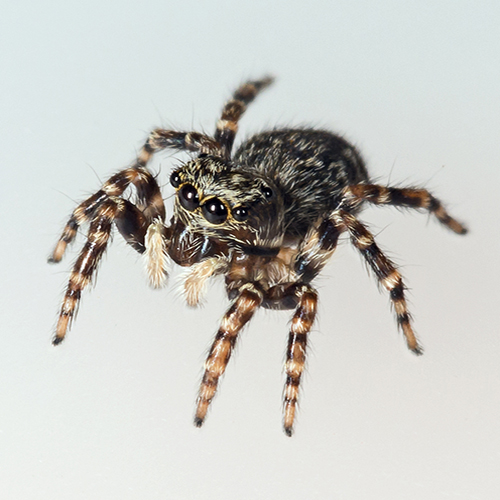Hunting spiders that make no webs

Wolf spider, Pardosa vancouveri.

Ground spider, Zelotes fratris.

Crab spider, Misumena vatia.
Silk structures that are not webs

Dragline made by Metine orbweaver.

Egg sac made by Araneine orbweaver.

Retreat made by jumping spider.

Spider Myth Resources
Explore even more! Additional spider resources and more myths (poor spiders can't catch a break!).
